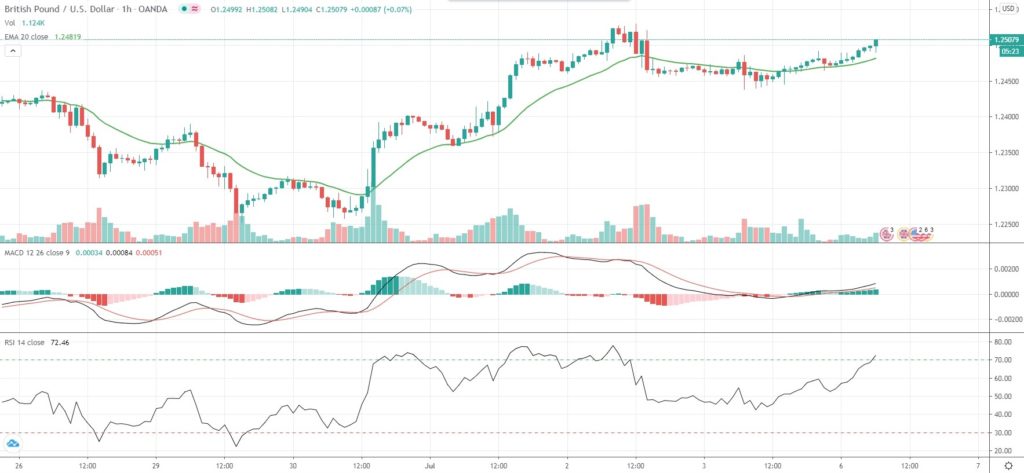Having registered its first week of gains in four last week, GBP/USD traded modestly higher, close to the 1.2500 mark, in early European session on Monday, as markets awaited fresh catalysts that could trigger a move in either direction.
Uncertainty surrounding Brexit continued to persist. Last week’s Brexit negotiations ended prematurely, as a meeting between chief negotiators from both sides on Friday was cancelled. While Britain’s chief negotiator David Frost said talks had been “comprehensive and useful”, the EU’s chief negotiator Michel Barnier noted significant divergences still remained.
Since an extension of the current transition period is now off the table, both sides will have to accelerate efforts to reach an agreement on their future trade relations. Otherwise, they will have to trade on World Trade Organization terms from January 1st 2021.
According to Jane Foley, head of Forex strategy at Rabobank, the longer markets wait for specific Brexit news, the higher the likelihood is for the British currency to depreciate.
As of 6:57 GMT on Monday GBP/USD was edging up 0.20% to trade at 1.2506, while moving within a daily range of 1.2465-1.2510. The major pair snapped a three-week streak of losses, advancing 1.18% last week.
On today’s macroeconomic front, at 8:30 GMT IHS Markit/CIPS will report on UK construction sector activity for June. The respective Purchasing Managers’ Index probably came in at a reading of 47.0, according to market expectations, up from 28.9 in May. The latter indicated the second-sharpest contraction in the sector since February 2009, as new orders and employment continued to decrease at sharp rates.
A monthly report by the Institute for Supply Management at 14:00 GMT may show activity in the US sector of services discontinued contracting in June. The respective Non-Manufacturing Purchasing Managers’ Index is expected to come in at a reading of 50.0, up from 45.4 in May. Production, new orders, employment and inventories decreased at a softer rate in May compared to a month ago, the ISM said.
“Respondents remain concerned about the ongoing impact of the coronavirus. Additionally, many of the respondents’ respective companies are hoping and/or planning for a resumption of business,” Anthony Nieves, Chair of the Institute for Supply Management, said.
Bond Yield Spread
The spread between 2-year US and 2-year UK bond yields, which reflects the flow of funds in a short term, equaled 25.6 basis points (0.256%) as of 6:15 GMT on Monday, up from 24.6 basis points on July 3rd.
Daily Pivot Levels (traditional method of calculation)
Central Pivot – 1.2471
R1 – 1.2503
R2 – 1.2524
R3 – 1.2557
R4 – 1.2589
S1 – 1.2449
S2 – 1.2417
S3 – 1.2395
S4 – 1.2374






